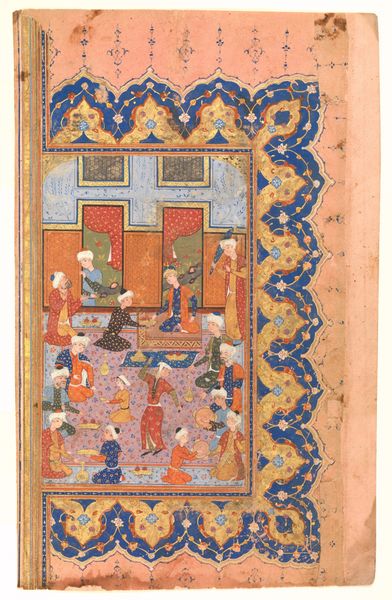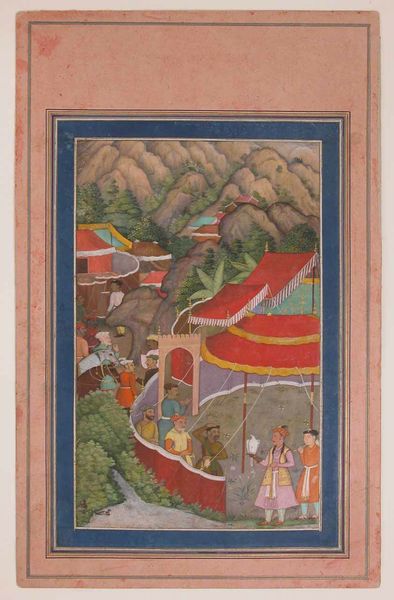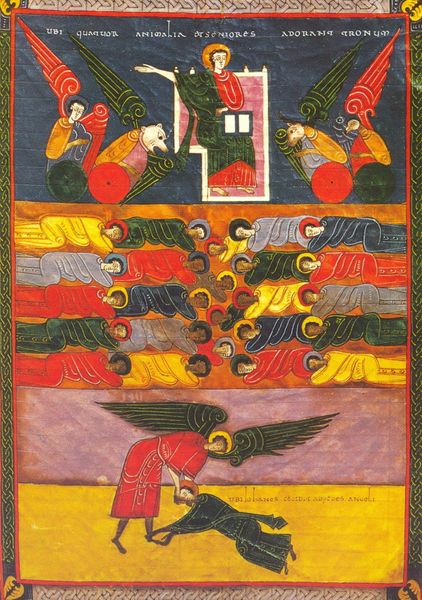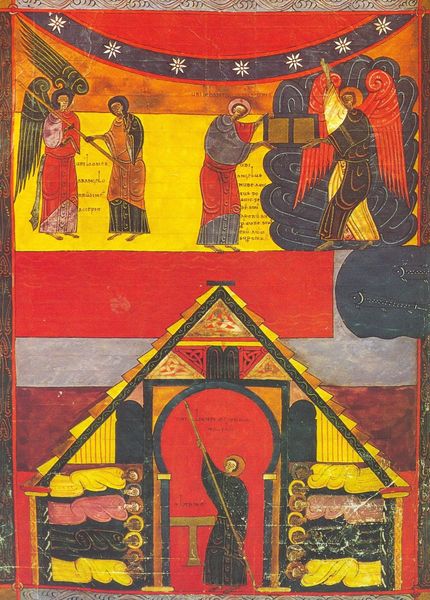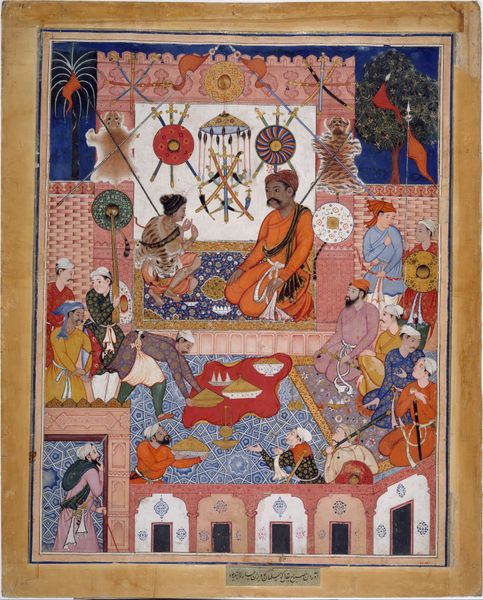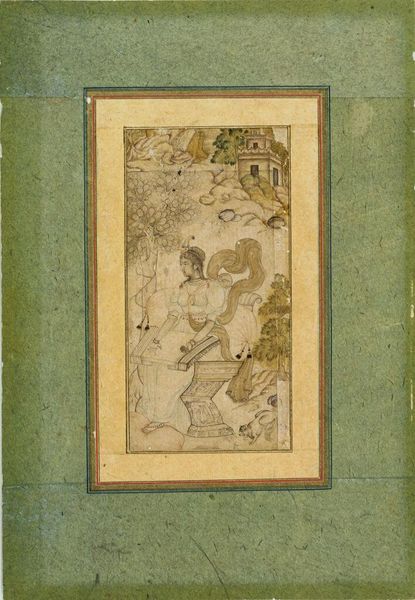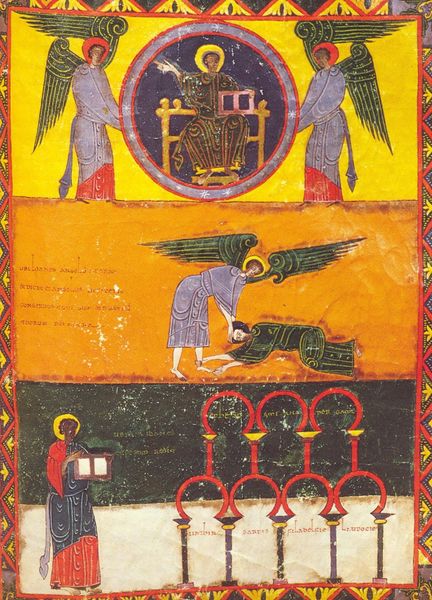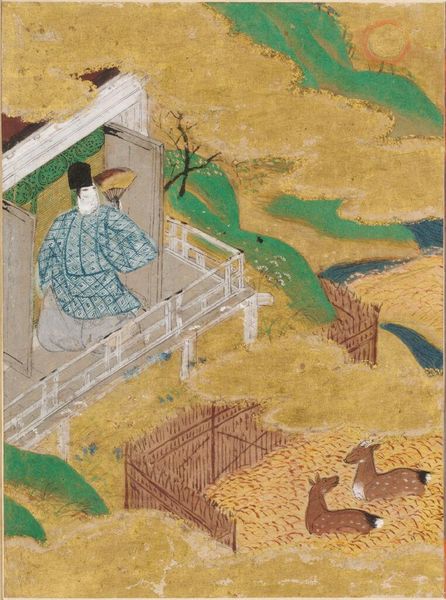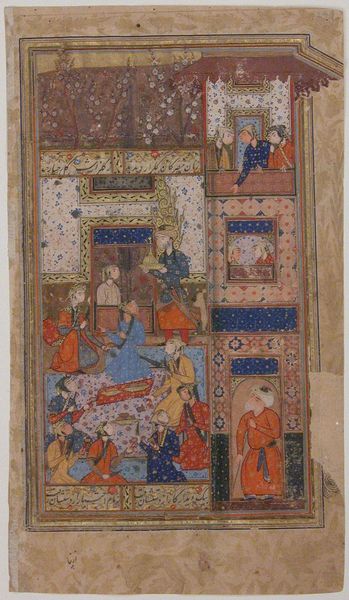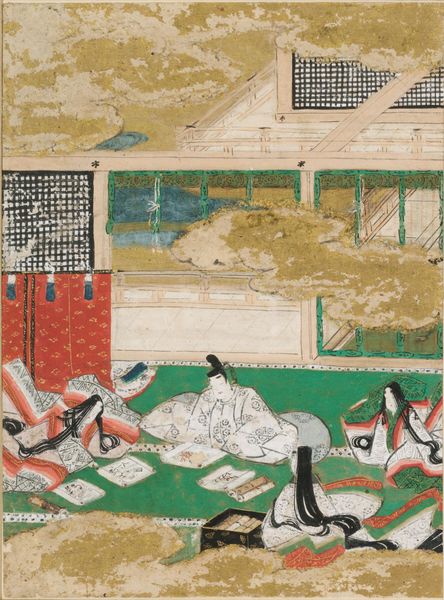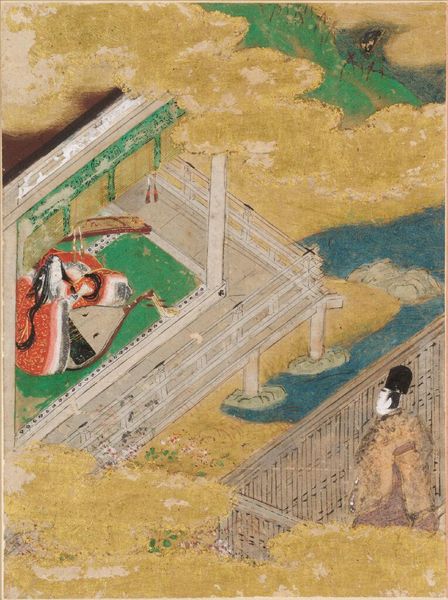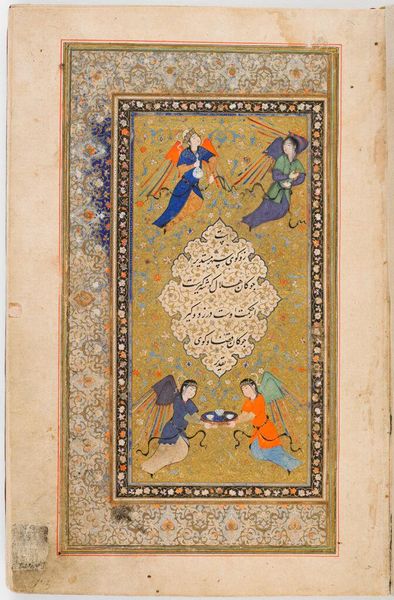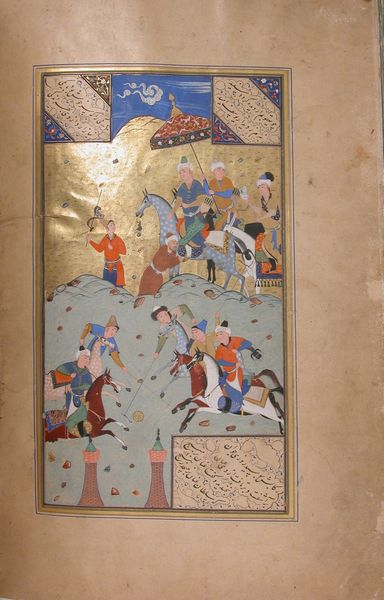
The Law (Minori), Illustration to Chapter 40 of the Tale of Genji (Genji monogatari) c. 1509 - 1510
0:00
0:00
Dimensions: H. 24.2 cm x W. 18.0 cm (9 1/2 x 7 1/16 in.)
Copyright: CC0 1.0
Curator: The artwork before us, held in the Harvard Art Museums, is an illustration to Chapter 40 of the Tale of Genji, entitled "The Law," by Tosa Mitsunobu. The dimensions are roughly 24 by 18 centimeters. I'm struck by the ornate, almost dreamlike quality of the scene. Editor: It feels like a stage set, doesn't it? The deliberate composition and opulent details seem designed to convey a specific narrative—what can you tell me about the social or cultural backdrop? Curator: Well, the Tale of Genji is a cornerstone of Japanese literature, offering a glimpse into Heian court life. Mitsunobu's illustration, I believe, reflects the aesthetic values of the time, where visual representations reinforced social hierarchies and moral teachings. The Tale itself, written by Murasaki Shikibu, a lady-in-waiting, explores the constraints and expectations placed upon women. Editor: So the opulent details might be a commentary on the gilded cage of courtly life? The snake-like figure near the top-left seems to echo the constraints, twisting around the scene. Curator: Precisely. And the deliberate positioning of figures and architectural elements speaks to the careful choreography of power within that society. It is not just art for art's sake; it's a reflection of the prevailing ideology. Editor: Fascinating. It encourages us to question what narrative is presented and who profits from it. Curator: Indeed. This work exemplifies the enduring intersectional power of visual art. Editor: A crucial reminder to examine the frameworks through which we understand art.
Comments
No comments
Be the first to comment and join the conversation on the ultimate creative platform.
